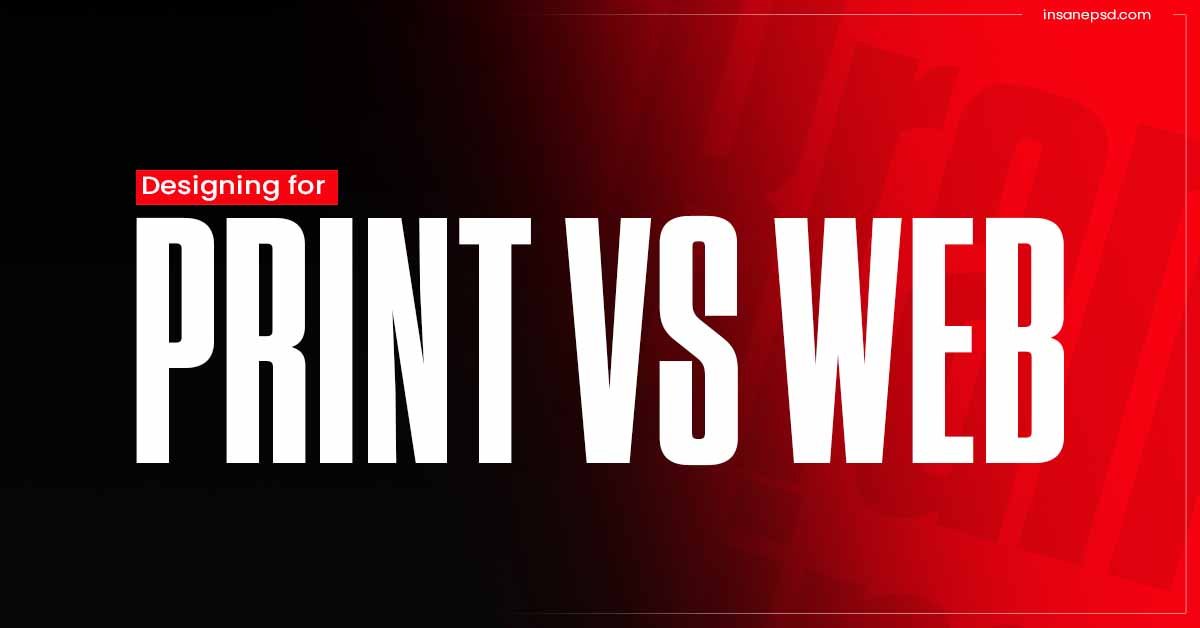I. Introduction
In the ever-evolving landscape of design, understanding the disparities between print and web is crucial. Both mediums demand unique approaches, each with its set of challenges and considerations. Let’s delve into the fundamental differences and essential factors to consider when crafting designs for print and the web.
II. Design Principles
A. Print Precision
When designing for print, precision is paramount. The static nature of print materials necessitates meticulous attention to detail. Every element, from text to imagery, must be carefully placed for a polished result.
B. Web Dynamics
Conversely, web design embraces a dynamic environment. Designers must consider the fluidity of content, ensuring it adapts seamlessly across various devices and screen sizes. Fluid layouts and responsive elements take center stage in web design principles.
III. Visual Elements
A. Typography, Color, and Imagery in Print
Print design allows for more intricate typography and vibrant colors, often utilizing high-quality images. The tangible nature of print enhances the visual impact, making the details stand out.
B. Web’s Visual Adaptability
Web designers need to prioritize adaptability. Choosing web-safe fonts, considering color consistency across devices, and optimizing images for faster loading become crucial elements in this digital realm.
IV. Layout and Dimensions
A. Print-Specific Considerations
Print layouts adhere to fixed dimensions, requiring designers to tailor their work to a specific size. Bleed, trim, and resolution settings are critical factors for print-ready designs.
B. Web’s Fluid Layout
Web design embraces fluid layouts, allowing content to shift and adjust dynamically. Considering responsive frameworks and breakpoints becomes pivotal for a seamless user experience.
V. Interactivity and Responsiveness
A. Web’s Interactive Landscape
Interactivity is the hallmark of web design. From clickable buttons to engaging multimedia, designers must create experiences that captivate and respond to user actions.
B. Print’s Static Nature
Print, being static, lacks the interactive elements of the web. However, strategic design choices can still evoke a sense of engagement through visuals and layout.
VI. File Formats
A. Print-Friendly vs. Web-Friendly Formats
Print design leans towards high-resolution formats like TIFF and PDF, ensuring optimal quality during the printing process. On the web, compressed formats like JPEG and PNG are preferred for faster loading times.
VII. Printing Considerations
A. Resolution, Bleed, and Trim
Print designers must grapple with resolution challenges, ensuring images and graphics appear crisp when printed. Additionally, understanding bleed and trim is essential for a professional-looking final product.
VIII. SEO in Web Design
A. Integrating Search Engine Optimization
Web designers incorporate SEO elements seamlessly into their designs. Optimizing images, utilizing proper heading tags, and crafting descriptive meta tags contribute to a website’s visibility on search engines.
IX. User Experience
A. Print vs. Web User Expectations
Understanding user expectations is vital. Print users seek a tactile and immersive experience, while web users demand intuitive navigation and quick access to information.
X. Design Software
A. Tools for Print and Web Design
Adobe Creative Suite dominates the print design realm, offering tools like InDesign and Photoshop. Web designers often rely on platforms like Sketch, Figma, or Adobe XD for their collaborative and responsive features.
XI. Budget and Cost Factors
A. Financial Considerations for Each Medium
Print materials often involve upfront printing costs and considerations for paper quality. Web design, on the other hand, focuses on hosting and development costs, with ongoing maintenance expenses.
XII. Case Studies
A. Examples of Successful Print and Web Design
Exploring successful case studies provides insights into effective design strategies. Examining both print and web examples offers a holistic view of impactful design executions.
XIII. Future Trends
A. Emerging Trends in Print and Web Design
Staying abreast of emerging trends is crucial for designers. While print design evolves with innovative printing techniques, web design trends may shift towards new technologies like augmented reality and immersive experiences.
XIV. Challenges
A. Common Hurdles in Both Mediums
Both print and web design face challenges, be it meeting client expectations, adapting to technological changes, or addressing budget constraints. Acknowledging these hurdles is the first step towards overcoming them.
XV. Conclusion
In the dynamic realm of design, recognizing the unique demands of print and web is imperative. While print thrives on precision and tangibility, web design embraces interactivity and adaptability. Successful designers navigate these differences with finesse, creating impactful experiences tailored to each medium’s strengths.
FAQs
- Is it possible to use the same design for both print and web?
- While some elements may overlap, it’s advisable to tailor designs to the specific requirements of each medium for optimal results.
- How does resolution impact print design?
- High resolution is crucial in print to ensure images and text appear sharp and clear when printed.
- Can web design principles be applied to print?
- Some principles, like user experience considerations, can be adapted, but the static nature of print requires unique design approaches.
- What role does SEO play in web design?
- SEO is integral to web design, influencing how websites rank on search engines and driving organic traffic.
- Are there any budget-friendly design tools for beginners?
- Yes, tools like Canva and GIMP offer user-friendly interfaces and are suitable for designers on a budget.
